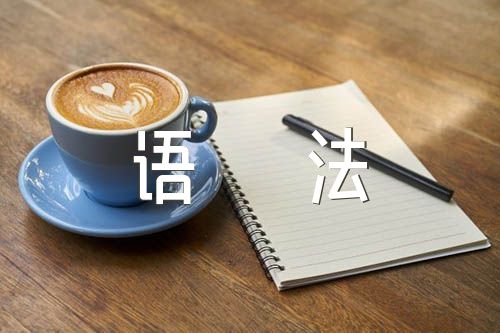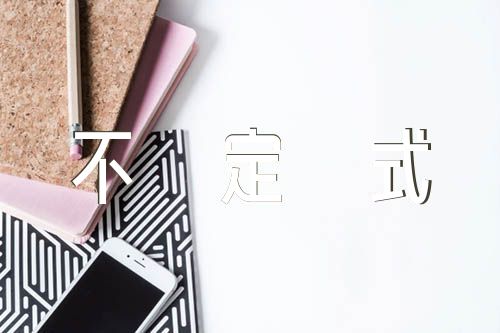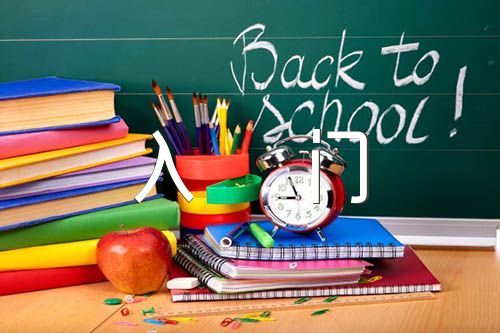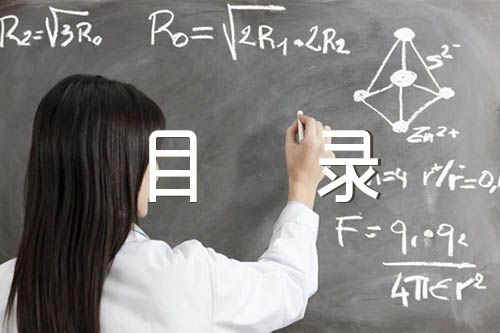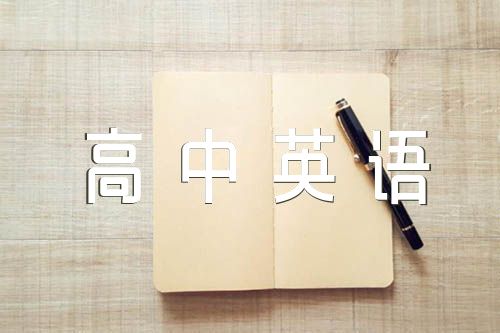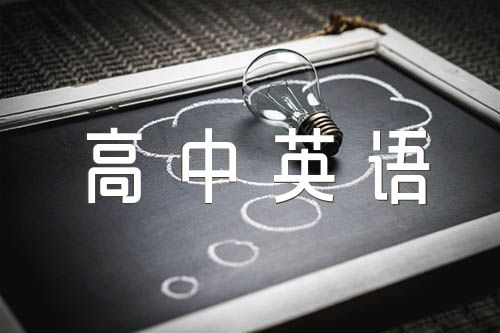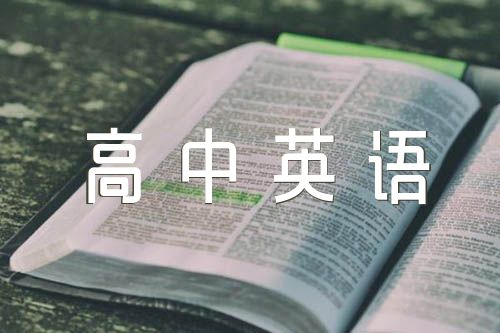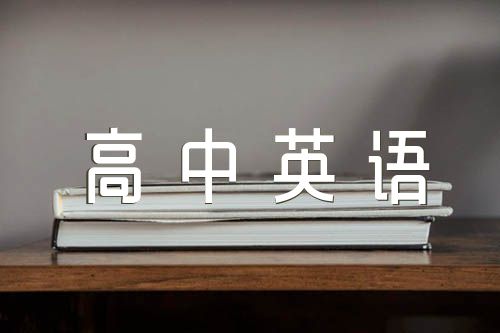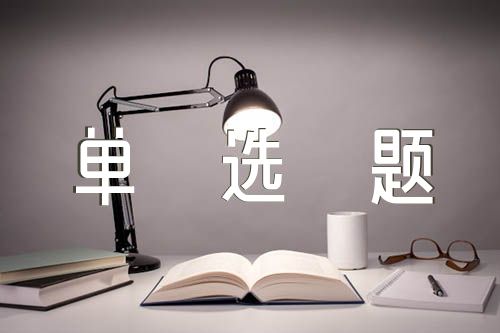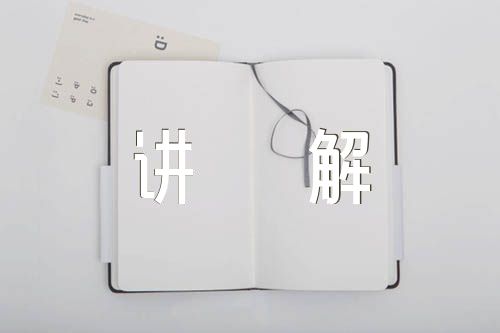【www.jianqiaoenglish.com--英语语法】
以下是为大家整理的七年级英语语法知识点归纳总结集合3篇,欢迎品鉴!
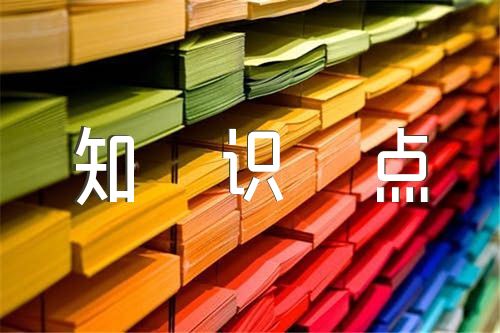
七年级英语语法知识点归纳总结篇1
背单词
单词是基础,一定要把单词记熟,背单词。睡前背,早上起来背,效果最好。根据情况,背单词的时候一定要把读音结合上。背名词的时候要结实物背,这样的方法有趣又有效。词组一定要背。自己准备一个小本子,把你遇到不会的题解决之后记到一个小本子上,随时随地进行记录。
口语练习
多读,多张嘴,这样可以快速提高语感,在做完型填空的时候就很会很容易得选出答案。做题的时候可以不根据语法也能做对题。
阅读技能
坚持做阅读,阅读在考卷中占得比例特别大,所以一定要多做。要有耐心。印刷体最好练一下。
最后,多背一些作文模板,在需要用的时候可以活学活用。
七年级英语语法知识点归纳总结篇2
一、初一英语语法——词法
1、名词
A)、名词的数
我们知道名词可以分为可数名词和不可数名词,而不可数名词它没有复数形式,但可数名词却有单数和复数之分,复数的构成如下:
一)在后面加s。如:fathers, books, Americans, Germans, apples, bananas
二)x, sh, ch, s, tch后加es。如:boxes, glasses, dresses, watches, wishes, faxes
三)1)以辅音字母加y结尾的变y为i再加es 如:baby-babies, family-families, duty-duties, comedy-comedies, documentary-documentaries, story-stories
2)以元音字母加y结尾的直接加s。如:day-days, boy-boys, toy-toys, key-keys, ways
四)以o结尾加s(外来词)。如:radios, photos, 但如是辅音加o的加es:如: tomatoes西红柿, potatoes马铃薯
五)以f或fe结尾的变f为v再加es(s)。如:knife-knives, wife-wives, half-halves, shelf-shelves, leaf-leaves, yourself-yourselves
六)单复数相同(不变的)有:fish, sheep, deer鹿子, Chinese, Japanese
七)一般只有复数,没有单数的有:people,pants, shorts, shoes, glasses, gloves, clothes, socks
八)单词形式不变,既可以是单数也可以是复数的有:police警察局,警察, class班,同学, family家,家庭成员
九)合成的复数一般只加主要名词,多数为后一个单词。如:action movie-action movies, pen pal-pen pals; 但如果是由man或woman所组成的合成词的复数则同时为复数。如:man doctor-men doctors, woman teacher-women teachers
十)有的单复数意思不同。如:fish鱼 fishes鱼的种类, paper纸 papers报纸,卷子,论文, work工作 works作品,工厂, glass玻璃 glasses玻璃杯,眼镜, orange桔子水 oranges橙子, light光线 lights灯, people人 peoples民族, time时间 times时代, 次数, chicken 鸡肉 chickens 小鸡
十一) 单个字母的复数可以有两种形式直接加s或"s。如:Is (I"s), Ks (K"s)。但如是缩略词则只加s。如:IDs, VCDs, SARs
十二) 特殊形式的有:child-children, man-men, woman-women, foot-feet, mouse-mice, policeman-policemen, Englishman-Englishmen
B)名词的格
当我们要表示某人的什么东西或人时,我们就要使用所有格形式。构成如下:
一)单数在后面加"s。如:brother"s, Mike"s, teacher"s
二)复数以s结尾的直接在s后加",如果不是以s结尾的与单数一样处理。如:Teachers" Day教师节, classmates"; Children"s Day六一节, Women"s Day三八节
三)由and并列的名词所有时,如果是共同所有同一人或物时,只加最后一个"s,但分别拥有时却分别按单数形式处理。如:Mike and Ben"s room迈克和本的房间(共住一间),Mike"s and Ben"s rooms迈克和本的房间(各自的房间)
2、代词
项目 人称代词 物主代词 指示代词 反身代词
人称 主格 宾格 形容词 名词性
第一人称 单数 I me my mine myself
复数 we us our ours ourselves
第二人称 单数 you you your yours yourself
复数 you you your yours yourselves
第三人称 单数 she her her hers herself
he him his his himself
it it its its this that itself
复数 they them their theirs these those themselves
3、动词
A) 第三人称单数
当动词是第三人称单数时,动词应该像名词的单数变动词那样加s,如下:
一)一般在词后加s。如:comes, spells, waits, talks, sees, dances, trains
二)在x, sh, ch, s, tch后加es。如:watches, washes, wishes, finishes
三)1)以辅音字母加y结尾的变y为i再加es。如:study-studies, hurry-hurries, try-tries
2)以元音字母加y结尾的直接加s。如:plays, says, stays, enjoys, buys
四)以o结尾加es。如:does, goes
五)特殊的有:are-is, have-has
B) 现在分词
当我们说某人正在做什么事时,动词要使用分词形式,不能用原形,构成如下:
一)一般在后加ing。如:spell-spelling, sing-singing, see-seeing, train-training, play-playing, hurry-hurrying, watch-watching, go-going, do-doing
二)以不发音e的结尾的去掉e再加ing。如:dance-dancing, wake-waking, take-taking, practice-practicing, write-writing, have-having
三)以重读闭音节结尾且一个元音字母+一个辅音字母(注意除开字母组合如show –showing, draw-drawing)要双写最后的辅音字母再加ing。如:put-putting, run-running, get-getting, let-letting, begin-beginning
四)以ie结尾的变ie为y再加ing。如:tie-tying系 die-dying死 lie-lying 位于
4、形容词的级
我们在对两个或以上的人或物进行对比时,则要使用比较或最高级形式。构成如下:
一) 一般在词后加er或est(如果是以e结尾则直接加r或st)。如:greater-greatest, shorter –shortest, taller –tallest, longer –longest, nicer- nicest, larger -largest
二)以重读闭音节结尾且1个元音字母+1个辅音字母(字母组合除外,如few-fewer fewest)结尾的双写结尾的辅音再加er /est。如:big-bigger biggest, red-redder reddest, hot-hotter hottest
三) 以辅音字母+y结尾的变y为i加er/est。如:happy-happier happiest, sorry-sorrier sorriest, friendly-friendlier friendliest(more friendly most friendly), busy-busier busiest, easy-easier easiest
四)特殊情况:(两好多坏,一少老远)
good/well - better best many/much - more most bad/ill – worse worst
little- less least old- older/elder oldest/eldest far- farther/further farthest/furthest
5、数词 (基变序,有规则;一、二、三,自己背;五、八、九、十二;其它后接th;y结尾,变为i, eth跟上去。) first, second, third; fifth, eighth, ninth, twelfth; seventh, tenth, thirteenth, hundredth; twenty-twentieth, forty-fortieth, ninety-ninetieth
二、初一英语语法——句式
1.陈述句
肯定陈述句 a) This is a book. (be动词)
b) He looks very young. (连系动词)
c) I want a sweat like this. (实义动词)
d) I can bring some things to school. (情态动词)
e) There"s a computer on my desk. (There be结构)
否定陈述句 a) These aren"t their books. b) They don"t look nice.
c) Kate doesn"t go to No. 4 Middle School. d) Kate can"t find her doll.
e) There isn"t a cat here. (=There"s no cat here.)
2. 祈使句
肯定祈使句 a) Please go and ask the man. b) Let"s learn English!
c) Come in, please.
否定祈使句a) Don"t be late. b) Don"t hurry.
3. 疑问句
1) 一般疑问句 a) Is Jim a student? b) Can I help you? c) Does she like salad?
d) Do they watch TV? e) Is she reading?
肯定回答: a) Yes, he is. b) Yes, you can. c) Yes, she does. d) Yes, they do. e) Yes, she is.
否定回答: a) No, he isn"t. b) No, you can"t. c) No, she doesn"t. d) No, they don"t. e) No, she isn"t.
2) 选择疑问句 Is the table big or small? 回答 It"s big./ It"s small.
3) 特殊疑问句
① 问年龄 How old is Lucy? She is twelve.
② 问种类 What kind of movies do you like? I like action movies and comedies.
③ 问身体状况 How is your uncle? He is well/fine.
④ 问方式 How do/can you spell it? L-double O-K.
How do we contact you? My e-mail address is cindyjones@163.com.
⑤ 问原因 Why do you want to join the club?
⑥ 问时间 What"s the time? (=What time is it?) It"s a quarter to ten a.m..
What time do you usually get up, Rick? At five o"clock.
When do you want to go? Let"s go at 7:00.
⑦ 问地方 Where"s my backpack? It"s under the table.
⑧ 问颜色 What color are they? They are light blue.
What"s your favourite color? It"s black.
⑨ 问人物 Who"s that? It"s my sister.
Who is the boy in blue? My brother.
Who isn"t at school? Peter and Emma.
Who are Lisa and Tim talking to?
⑩ 问东西 What"s this/that (in English)? It"s a pencil case.
What else can you see in the picture? I can see some broccoli, strawberries and hamburgers.
11问姓名 What"s your aunt"s name? Her name is Helen./She"s Helen.
What"s your first name? My first name"s Ben.
What"s your family name? My family name"s Smith.
12 问哪一个 Which do you like? I like one in the box.
13 问字母 What letter is it? It"s big D/small f.
14 问价格 How much are these pants? They"re 15 dollars.
15 问电话号码 What"s your phone number? It"s 576-8349.
16 问谓语(动作) What"s he doing? He"s watching TV.
17 问职业(身份) What do you do? I"m a teacher.
What"s your father? He"s a doctor.
三、初一英语语法——时态
1、一般现在时 表示普遍、经常性的或长期性的动作时使用一般现在时,它有:
Be 动词:She"s a worker. Is she a worker? She isn"t a worker.
情态动词:I can play the piano. Can you play the piano? I can"t play the piano.
行为动词:They want to eat some tomatoes. Do they want to eat any tomatoes? They don"t want to eat any tomatoes.
Gina has a nice watch. Does Gina have a nice watch? Gina doesn"t have a watch.
2、现在进行时 表示动词在此时正在发生或进行就使用进行时态,结构为sb be v-ing sth + 其它.
I"m playing baseball. Are you playing baseball? I"m not playing baseball.
Nancy is writing a letter. Is Nancy writing a letter? Nancy isn"t writing a letter.
They"re listening to the pop music. Are they listening the pop music? They aren"t listening to the pop music.
1. 形容词的用法:
形容词用以修饰名词,表示人或事物的特征。在句中可以作定语、表语,用于限定被修饰语的特征,如长短、大小、重量、颜色、高矮、胖瘦、新旧等,。
The little girl is very pretty. 这个小女孩很好看。
--I want that one. 我想要那个。
--Which one? 哪一个?
--The new blue one. 那个蓝色新的。
Can I have a look at the big nice one? 我能看一看那个大的漂亮的吗?
2、人称代词:
是用来表示人的代词,有单数和负数之分,有主格和宾格之分。人称代词的主格在句中作主语;人称代词的宾格在句中作宾语,是作动词或介词的宾语。
主格:I, we, you, he, she, it, they在句子中作主语
宾格:me, us, you, him, her, it, them在句子中作宾语
He and I are in the same class. 我和他在同一个班级。
Can you see them in the street? 你能看见他们在街上吗?
3、可数名词和不可数名词
英语中名词分为可数名词和不可数名词。凡是可数计数的名词叫做可数名词;凡是不可以计数的名词叫做不可数名词。
(1)可数名词分为单数和复数两种形式。可数名词前可以用不定冠词、数词或some many等修饰。如:a man a desk an apple an orange some books some children tow pens
(2)不可数名词没有复数形式,前面不能用不定冠词、数词或many等词语修饰,但可以用some a little much等词语来修饰。有时可以与一些量词短语搭配,这些量词短语中的名词一般是可数的,有单数形式,也可以有复数形式。如:some water a little milk much food a piece of bread tow bottles of ink some glasses of water
4、祈使句
祈使句用来表示请求、命令等,句中没有主语,肯定形式由谓语或者谓语+宾语(+宾语补足语)构成,否定形式则在句前加Don"t.
Stand up, please. 请起立。 Don"t worry. 别担心。
can的用法:
can是情态动词,表示“能,会,可以,被允许等”,其后接动词原形,否定形式为cannot,可缩写为can"t.
She can speak Japanese. 她会讲日语。
I can"t remember his name. 我不记得他的名字了。
Can you spell your name? 你会拼写你的名字吗?
5、现在进行时态:
概念:表示现在(说话瞬间)正在进行或发生的动作,也可以表示目前一段时间内或现阶段正在进行的活动。
结构:由be动词(am, is, are) + 动词ing构成,其中be动词要与主语保持性数一致。
Mary is flying a kite in the park. 玛丽正在公园里放风筝。
--What are you doing now? 你现在在干什么?
--I"m reading English. 我正在读英语。
Are they drawing the pictures now? 他们正在画画吗?
动词现在分词是动词原形变化而来的,规则变化如下:
动词ing形式叫动词现在分词,其构成如下:
1) 直接在动词后加ing
play—playing, do—doing, talk—talking, sing--singing
2) 以不发音的字母e结尾的动词,先去e,再加ing
make—making, write—writing, have—having, take—taking
3) 以重读闭音节结尾的动词且词尾只有一个辅音字母,应双写这个辅音字母,再加ing
run—running, stop—stopping, put—putting, swim—swimming
注意对现在进行时态的判断。判断一个英语句子用什么时态,主要看句子的时间状语,一般说来,每种时态都有与之相对应的时间状语。现在进行时表示现在(说话瞬间)正在进行或发生的动作。因此,这个时态最常用的时间状语是now;但有不少句子并没有now,只能通过提示语如look、listen等或者通过上下文来确定用现在进行时。
She is cleaning her room now. 她正在打扫房间。
Look! The girl is dancing over there. 看!那个女孩在那里跳舞。
Can you go and play games with me? 你能和我们一起做游戏吗?
Can"t you see I am doing my homework? 你没看见我正在做作业吗?
6、have/ has的用法:
1) 谓语动词have表示“有”,有两种形式:have和has,前者用于第一人称(I, we),第二人称(you)和第三人称复数(they),后者用于第三人称单数(he, she, it)或单数名词。
I have an apple and he has two bananas. 我有一个苹果,他有两个香蕉。
You have a new English teacher. 你们有了一个新的英语老师。
It has two big eyes. 它有一双大眼睛。
Julie and Jack have a nice car. 朱莉和杰克有一辆好看的车。
2) have/has句型与there be句型的比较:两者都表示“有”,但用法不同。前者表示所属关系,即表示“某人或某物有什么”,而后者表示存在,表示“某地有什么”。
They have some new books. 他们有一些新书。
There are some new books on their desks. 他们桌子上有一些新书。
She has a lot of pretty skirts. 她有很多漂亮的裙子。
There are a lot of pretty skirts in the shop. 商店里有很多漂亮的裙子。
3) have/ has的否定句,一般要加助动词do/ does,再加not构成,即do not have (don"t have)/ does not have (doesn"t have)
. She does not have a sister. 她没有姐姐。
We don"t have any classes on Saturday. 我们星期六没有课。
Ann and I don"t have a big room. 我和安没有一个大房间。
4) 一般疑问句由“助动词Do/ Does + 主语 + have + 宾语”构成,回答用Yes, … do/ does.或者No, … don"t/ doesn"t.
--Do you have a big house? 他们的房子大吗?
--No, they don"t. 不,他们的房子不大。
--Does he have an eraser? 他有橡皮吗?
--Yes, he does. 他有的。
5) 特殊疑问句由特殊疑问词 + 助动词do/ does + have (+状语)构成。
What do they have? 他们有什么?
What does he have? 他有什么?
How many telephones do they have? 他们有几部电话?
7、介词用法:
1) 具体时间前介词用at。
. He gets up at half past seven every day. 他每天七点半起床。
She goes to bed at eleven o"clock. 她十一点睡觉。
2) 表示“在早上,在下午,在晚上”的短语中用介词in,且定冠词the不能省略;表示“在中午,在夜里”的短语中介词用at,不加冠词。
in the morning在早上,in the afternoon 在下午,in the evening 在晚上
at noon在中午,at night在夜里
3) 表示“在某天”、“在某天的上午、下午等”的短语用介词on。
What do you usually do on Monday morning? 星期一上午你通常做什么?
Do you sometimes go out to eat on Friday evening? 有时你星期五晚上出去吃饭吗?
He watches DVDs on Saturday night. 星期六晚上他看DVD。
Parents take children to parks on June 1. 六月一日,家长们带着孩子去公园。
4) 在this, last, next, every等词前面既不加介词,也不用冠词。
What are you doing this afternoon? 今天下午你做什么?
He visits his grandma every Friday. 他每个星期五都去看望祖母。
She is going to Shanghai next Monday. 她下个星期一去上海。
8、一般现在时
一般现在时表示经常性或习惯性的动作,或表示现在的特征或状态。
其动词形式是:动词原形(只有第三人称单数作主语时除外,要加-s)其疑问句和否定句需要用助动词do或does
1) 肯定句用行为动词原形表示
They get up very early every morning. 他们每天早晨起来很早。
I visit my grandparents four times a month. 我一个月去看望祖父母四次。
2) 否定句用don"t + 动词原形来表示
We do not go shopping on Sundays. 我们周日不去购物。
I don"t think you like this colour. 我想你不喜欢这个颜色。
3) 一般疑问句则是把助动词do提前至句首,后面动词用原形。回答时,肯定用 “Yes, 主语+do”;否定句用 “No, 主语+don"t”。
–Do they go to school at seven o"clock? 他们七点去上学吗?
--Yes, they do.
--Do you like this skirt? 你喜欢这条裙子吗?
--No, I don"t. 不,我不喜欢。
一般现在时用来表示经常的或习惯性的动作,常与以下的时间状语连用:often 经常,always 总是,sometimes 有时,usually 通常,every day/ week 每天/ 周等。
He usually goes to school by bike. 通常他骑车上学。
I visit my grandparents every week. 我每个星期都去看祖父母。
She is always late for class. 她总是上课迟到。
My parents and I sometimes go out to eat. 我和父母有时出去吃饭。
It often rains here. 这儿常常下雨。
主语为第三人称单数时的一般现在时
一般现在时态,当主语为第三人称单数时,谓语动词也要是第三人称单数,后要加-s或-es。
He likes reading at night. 他喜欢夜里读书。
She usually goes to school by bike. 她平时骑车上学。
The little cat drinks milk every day. 小猫每天都喝牛奶。
转换成否定句要加doesn"t,其后的动词用原形。
Kelly doesn"t get up early on Saturdays and Sundays. 凯丽星期六星期天起床不早。
He doesn"t feel well today. 他今天感觉不舒服。
转换成一般疑问句,句首用Does,其后的动词用原形。
Does he have lunch at school? 他在学校吃午饭吗?
Does it take long by train? 乘火车要很长时间吗?
七年级英语语法知识点归纳总结篇3
一、单项选择(每空1分,共15 分)
( )1.He has _______ egg and ________ hamburger.
A.an;an B.a;a C.an;a D.a;an
( )2.---_________﹗Where is my cup?
---_________ ,I don’t know.
A.Excuse me;Yes B.Yes,Sorry C.Excuse me;Sorry D.Sorry;Yes
( )3.Sorry ,this is not ______ eraser.Please ask __________ .
A.his;his B.my;his C.his,me D.my;him
( )4.---How much _________ this bag? ---___________eight dollars.
A.be;It’s B.am;They’re C.is;It’s D.are;They’re
( )5.Thank you _______ the photo _______ your family.
A.for;for B.for;of C.of;of D.for;to
( )6.September is the_______ month of the year.
A.nineth B.tenth C.nine D. ninth
( )7. ―Your hat is very nice. ―______.
A. You are right B. That"s right C. You are welcome D. Thank you
( )8. I found a set of in the classroom.
A. key B. keysC. a key D. an key
( )9. —Is this pencil?
—Yes. The pen is , too.
A. your; my B. yours; mine C. your; mine D. yours; my
( )10.---_________ your father _________ eating meat?
A. Do;like B. Does;like C. Do;likes D. Are;like
( )11. This is my dress. That one is .
A. Mary’s B. my sister C. mother D. Mary
( )12、I don’t like this TV program. It’s _____.
A. fun B. difficult C. boring D. relaxing
( )13. Jim likes sports, he only watches them on TV?
A. and B. but C. or D. with
( )14.If you need my help, you can me__________ 63271567.
A.at B.by C.in D.to
( )15.__________is your backpack? It’s red and yellow.
A.What B.Where C.What color D.Why
二、完形填空(每空1分,共10 分)
Hello! My name is Dave Brown. My 16 name is Dave. I play sports every day and I am very 17 . I eat a lot of fruit and 18 . For fruit, I like apples, oranges, pears and 19 . For vegetables, I like tomatoes and 20 . I don’t like ice-cream. I like chicken 21 dinner every day. I like playing sports, too. I 22 in the morning. I like Lin Shuhao. Do you 23 him? Yeah, he is a basketball player. I like 24 basketball, too. I play it every afternoon. It is not 25 for me. Healthy food and lots of sports make(使得)me healthy.
( )16. A. first B. last C. family D. English
( )17. A. goodB. healthyC. dear D. boring
( )18. A. saladB. eggs C. vegetables D. rice
( )19. A. iceB. bananas C. cream D. hamburgers
( )20. A. oranges B. apples C. carrots D. chicken
( )21. A. ofB. forC. in D. on
( )22. A. run B. spellC. lose D. find
( )23. A. needB. call C. meet D. know
( )24. A. playing B. to playing C. play D. plays
( )25. A. difficult B. interesting C. great D. relaxing
三、阅读理解(每空2 分,共30分)
A
Tom: Good evening, Mum.
Mum: Good evening, Tom.
Tom: Do we eat chicken for dinner, Mum?
Mum: No, we eat fish and carrots, dear.
Tom: Mum, I don’t like carrots. I like chicken.
Mum: But we need more vegetables, not only meat(肉). It’s not healthy to eat chicken every day.
Tom: OK. But dad likes chicken, too.
Mum: Well, let’s eat chicken and tomatoes tomorrow.
Tom: That sounds great!
( )26. What do they eat for dinner?
A. Chicken. B. Carrots. C. Carrots and fish. D. Tomatoes.
( )27. What does Tom want to eat for dinner?
A. Fish. B. Chicken.C. Carrots. D. Tomatoes.
( )28. What do they need to eat more?
A. Chicken. B. Meat. C. Vegetables. D. Rice.
( )29. Does Tom’s father like chicken?
A. No, he doesn’t. B. Yes, he does.
C. No, he does. D. We don’t know.
( )30. What will they eat tomorrow?
A. Fish and carrots. B. Chicken and carrots.
C. Tomatoes and chicken. D. Fish and chicken.
B
Found:
A black pen is in the library. Is it yours? I am Lucy. E-mail me atlucy556@hotmail.com.
Lost:
I am Anna. I lost my computer game. It is blue. My telephone number is 471-4295. Call me! Thanks!
Lisa,
Is this your dictionary? Your name is on it. I found it in Classroom 6A.
Tom
Found:
I found a ring. It is nice. Please e-mail me atfrank996@gmail.com.
Frank
( ) 31. Lucy found a________ in the library.
A. pen B. computer game C. dictionary D. ring
( ) 32. What color is Anna’s computer game?
A. Black. B. Blue. C. Red. D. Yellow.
( ) 33. What is Anna’s telephone number?
A. It’s 470-4294. B. It’s 471-4295.
C. It’s 471-4394. D. It is 470-4293.
( ) 34. Tom found a dictionary in ________.
A. Classroom 9A B. Classroom 8A
C. Classroom 7A D. Classroom 6A
( ) 35. The dictionary may be (可能是) ________.
A. Lucy’s B. Anna’s C. Lisa’s D. Frank’s
C
Hi!I"m Lucy. I am a student in Class 5,Grade 7.I have a big schoolbag. It is blue and red. The price is ¥88.I have a nice pencil box in it. It is ¥10.Its color is white. I bought(买) it in a store. There are four pencils and one pen. Each pencil is ¥1 and the pen is ¥12.My eraser is yellow. The price is ¥2.My ruler is orange and very long. I like them very much. I study very hard.
( ) 36.I am in Grade________.
A.One B.Seven C.Three D.Five
( ) 37.My schoolbag is ________.
A.big B.small C.lost D.black
( ) 37.What color is my pencil box?It"s ________.
A.red B.blue C.white D.blue and red
( ) 39.How much are my pencils?
A.¥One. B.¥Two. C.¥Four. D.¥Ten.
( ) 40.The color of my eraser is ________.
A.orange B.black C.yellow D.blue
四、交际运用。从B 栏处找出与A栏相对应的选项(每空1分,共5分)
A B
( ) 41.How are you? A. No, it isn’t.
( ) 42.What color is your hat? B. No, he doesn’t.
( ) 43.Is this your volleyball? C. I like broccoli.
( ) 44.What vegetables do you like? D. It’s yellow.
( ) 45.Does he have eggs for breakfast? E. I’m fine, thanks.
五、句型转换(每空2分,共10分)
46. These are her pens. (改为一般疑问句)
her pens?
47.What can I do for you?(改为同义句)
Can I ?
48. I have a ping-pong bat. (改为否定句)
I a ping-pong bat.
49.This blue shirt is nine dollars.(对划线部分提问)
__________ __________ is this blue shirt?
50.Are those your grandparents?
Yes,________ __________.(作肯定回答)
六、词语运用。(每空1分,共10分)
(A)根据句意及首字母提示完成单词。
51. —Where is the c ? —On the desk.
52. How do you s it?P-E-N.
53. My f subject is P.E.
54. This book is i .We all like it.
55. What f does Sally like? She likes apples.
(B)用所给词的适当形式填空。
56. —Let’s (play) basketball. —Great!
57. I want (buy)a big bag.
58. Sally likes (tomato).
59. My sister is in the (one)picture.
60. Here (be)Alice’s books.
七、 完成句子。(每空2分,共10分)
61. 这首歌听起来很好。
The song .
62、你爸爸的生日是什么时候?
is your father’s ?
63、这是我的全家福。
This is my .
64. 你的身份证号码是多少?
Your ID ?
65. 他上学总是迟到。
He always for school.
八、书面表达。(10分)
今天是开学的第一天,老师让每个学生写一篇日记介绍自己,Bill 不太会写,你能根据下面的提示帮帮他吗?(日记开头已写出)
Family nameSmith
Given nameBill
Date of birth12月21日
Age14
Telephone number34562188
Colorblue
Fruitstrawberry
Collection2 tennis rackets,4soccers
Monday Nov.28th,2008 Friday
My name is_____________________________________________________________
________________________________________________________________________ ________
_______________________________________________________________________________
英语参考答案
一、单项选择 1-5. CCDCB 6-10. ADBCB 11-15.ACBAC
二、完形填空 16-20. ABCBC 21-25. BADAA
三、阅读理解 26-30. CBCBC 31-36. ABBDC
36-40. BACCC
四、交际运用
41-45. EDACB
五、句型转换 46、Are these 47、help you 48、don’t have
49、How much 50、they are
六、词语运用
(A)根据句意及首字母提示完成单词。
51、clock 52、spell 53、favorite
54、interesting 55、fruit
(B)用所给词的适当形式填空
56、play 57、to buy 58、tomatoes 59、first 60、are
七、 完成句子 61、sounds、good 62、When、birthday
63、family、photo/picture 64、What’s、card
65、is、late
八、书面表达(略)
